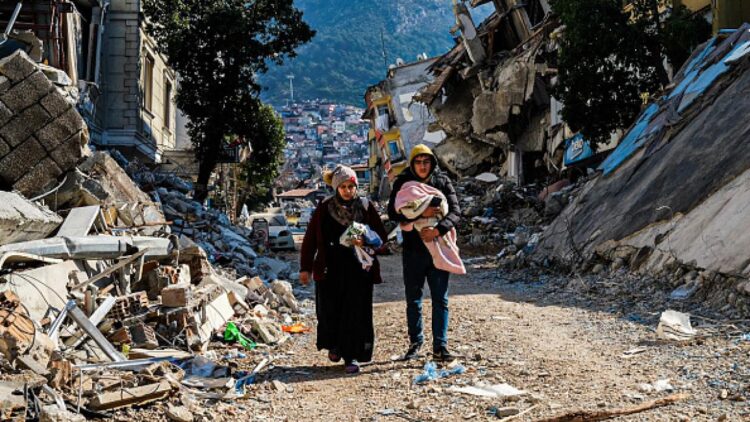This morning, rescuers extracted Sibel Kaya, a 40-year-old woman from Gaziantep province, alive from the rubble. In the meantime, the official death toll in Turkey and Syria continues to rise, exceeding 33,000, although some sources already speak of 40,000. The head of the UN crisis unit Martin Griffiths speculates a final tally of over 50,000.
After years of war, residents in northwest Syria affected by the massive earthquakes are grappling with their new and worsening reality.
One week after the devastating earthquakes struck northern Syria and neighbouring Turkey, the United Nations has acknowledged an international failure to help Syrian quake victims.
In Atareb, a town that Syrian rebels still hold after years of fighting government troops, survivors dug through the debris of their homes, picking up the remnants of their shattered lives and looking for ways to heal after the latest in a series of humanitarian disasters to hit the war-battered area.
Excavators lifted rubble and residents with shovels and picks destroyed columns to even out a demolished building.
Dozens of newly displaced families gathered for hot meals from local volunteers and the local opposition-run government. A citizen went tent to tent to give out wads of cash in a makeshift shelter – the equivalent of about $18 to each family.
Syrians were doing what they have honed over years of crises: relying on themselves to pick up the pieces and move on.
“We are licking our own wounds,” said Hekmat Hamoud, who had been displaced twice by Syria’s ongoing conflict before finding himself trapped for hours beneath the rubble.
Syria’s northwestern rebel-held enclave, where more than four million people have struggled to cope with ruthless air attacks and rampant poverty, was hit hard by the February 6 quakes.
Turkish woman extracted alive after a week. UN says more than 50,000 dead, while Syria suffer
© 2020 جميع الحقوق محفوظة لمؤسسة مرسي الدمقراطية.



